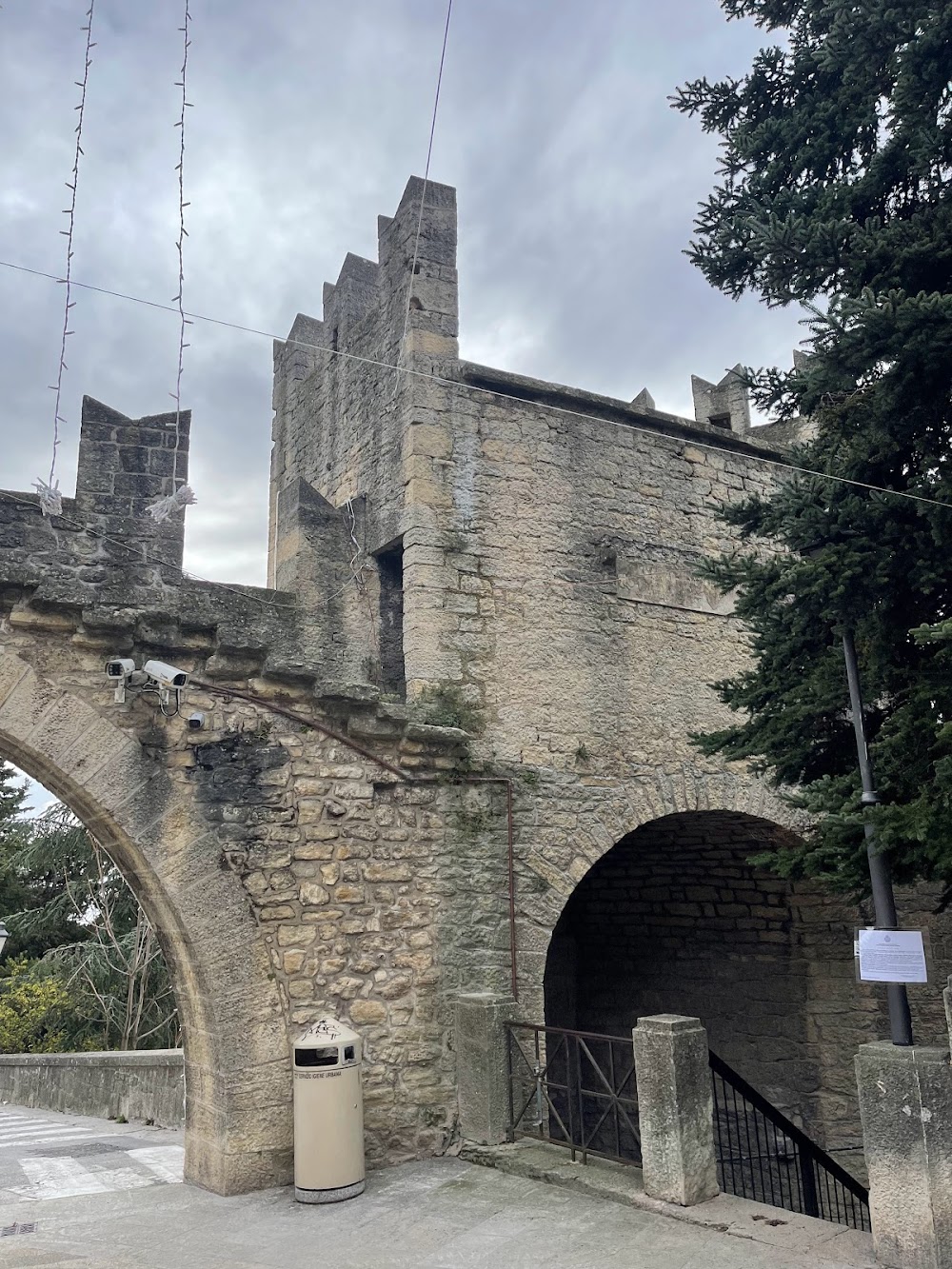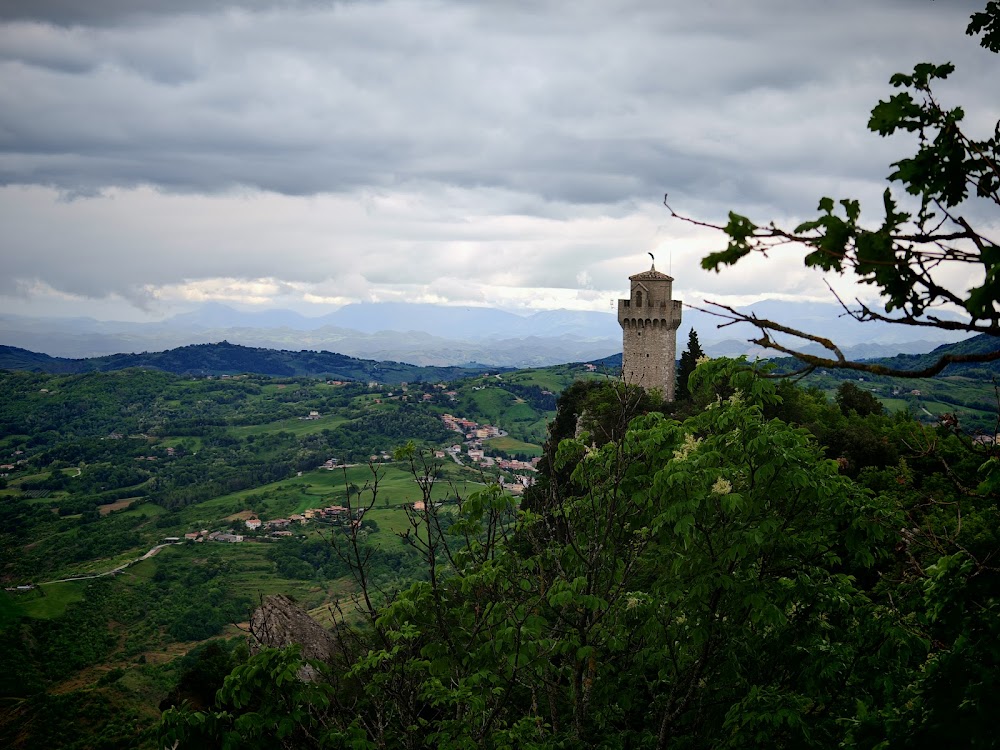Basilica di San Marino (Basilica di San Marino)
Overview
The Basilica of Saint Marinus, known as the Basilica di San Marino in Italian, stands majestically in the city of San Marino, symbolizing both religious devotion and cultural heritage. This historic edifice is a key landmark, intricately connected to the identity of both the city and the nation.
Originally built to honor Saint Marinus, the founder of the Republic of San Marino, the basilica's roots lie in legend. Saint Marinus, a stonemason from the island of Rab in modern-day Croatia, fled to Mount Titano to escape persecution for his Christian faith. There, he established a small Christian community, which eventually blossomed into the Republic of San Marino. To commemorate his lasting legacy, the citizens resolved to construct a grand basilica in his honor.
Construction of the current basilica commenced in 1826 and was completed in 1838. However, this was not the first church dedicated to Saint Marinus; the original structure, dating back to the 4th century, had deteriorated by the early 1800s. The decision to build a new basilica was prompted by the need for a more magnificent place of worship, reflecting the saint's enduring influence.
The basilica's design was entrusted to Achille Serra, an architect from Bologna, who embraced the neoclassical style that was all the rage in the 19th century. The façade is characterized by its striking symmetry, echoing ancient Roman temples, and is adorned with Corinthian columns that support a triangular pediment inscribed with the words "Divo Marino Patrono Et Libertatis Avtori" (To Saint Marinus, Patron and Founder of Liberty).
Inside, the basilica is equally breathtaking. The interior is laid out in a traditional Latin cross, featuring a central nave flanked by two aisles and culminating in a grand apse. High ceilings and ample windows bathe the space in light, creating an atmosphere of serenity and reverence. The altar, crafted from white marble, stands as the focal point of the church, topped by a striking statue of Saint Marinus, sculpted by Adamo Tadolini.
The basilica also houses important relics and art pieces, including a reliquary containing the skull of Saint Marinus, which is displayed in a dedicated chapel to the right of the main altar. This chapel serves as a pilgrimage site, attracting visitors from around the globe who come to pay their respects to the revered saint.
Beyond its religious significance, the Basilica di San Marino symbolizes the nation's enduring heritage and independence. Despite being surrounded by larger nations, San Marino has maintained its sovereignty for centuries. The basilica, perched atop Mount Titano, stands as a testament to the resilience and determination of its people.
Over the years, the basilica has witnessed numerous significant events, including the celebrations of national holidays and the swearing-in ceremonies of the Captains Regent, the heads of state of San Marino. It remains a central hub for community gatherings and an integral part of San Marino's cultural identity.
In conclusion, the Basilica of Saint Marinus is much more than a place of worship; it is a beacon of historical and national pride for the people of San Marino. Its grand architecture, rich history, and deep connection to the founder of the country make it a must-visit destination for anyone intrigued by the unique story of this remarkable nation.







